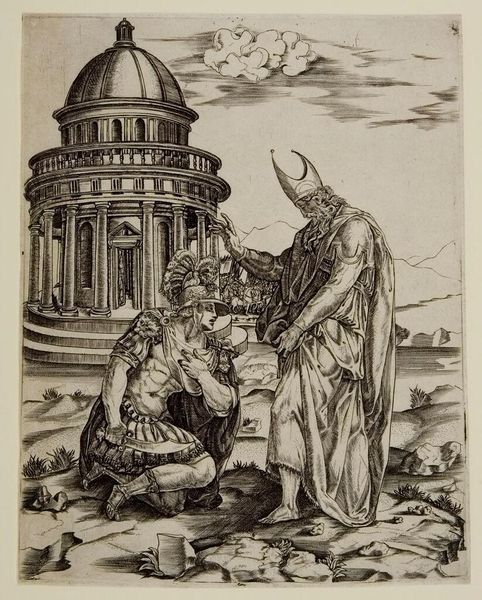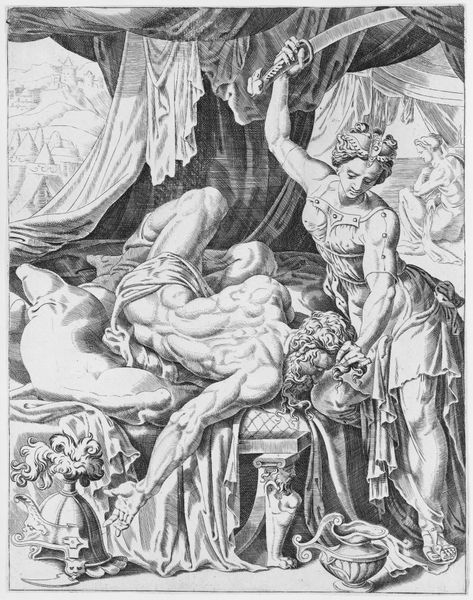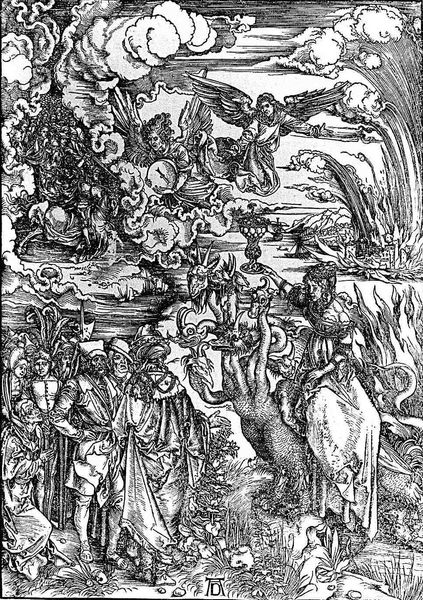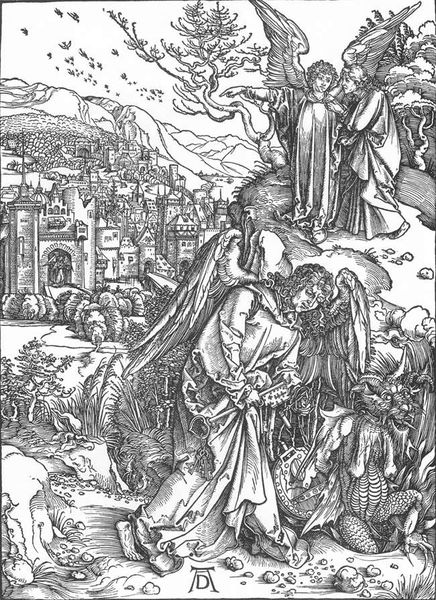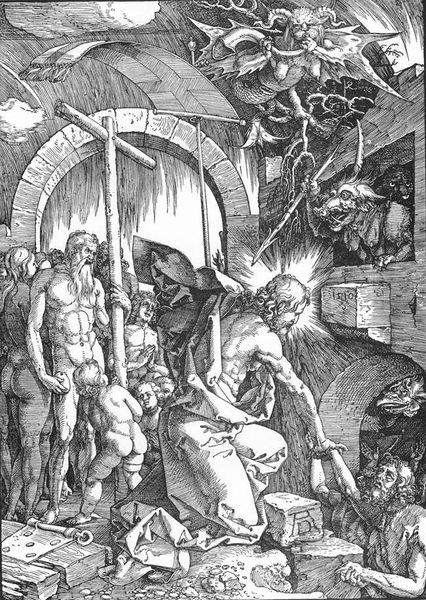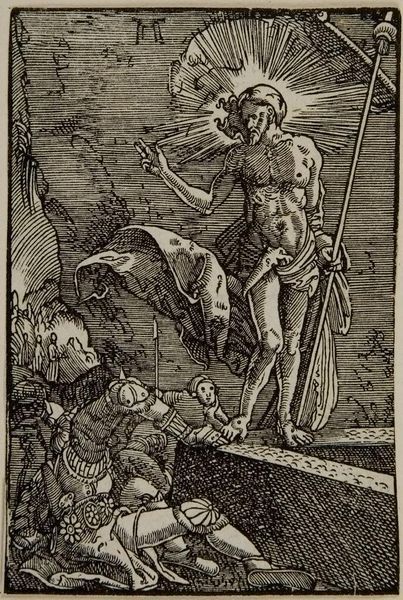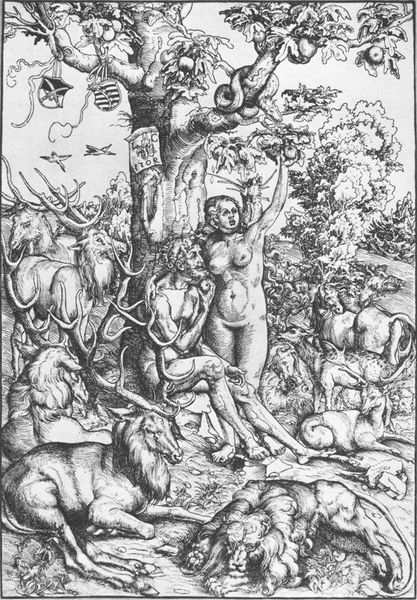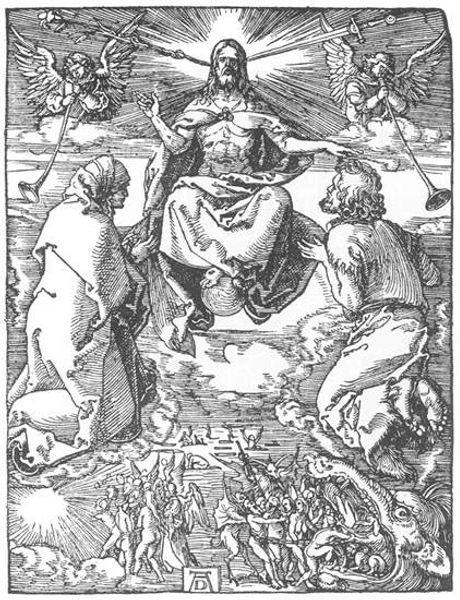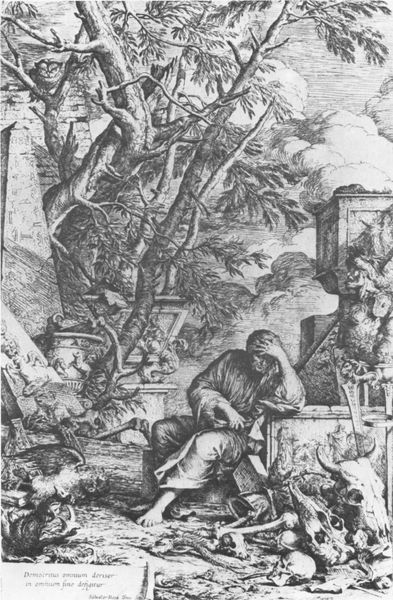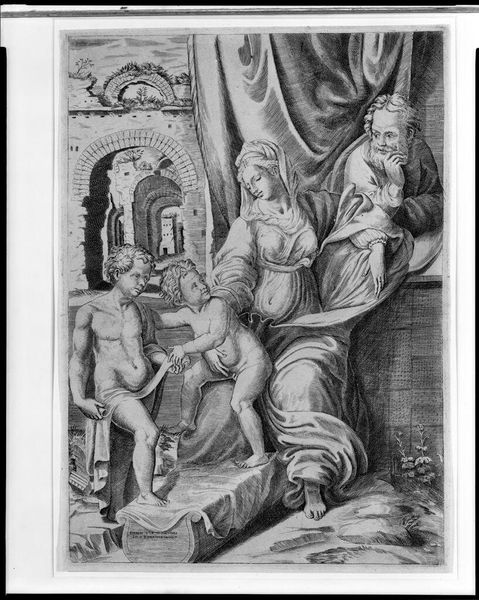
Alexander the Great Kneeling Before the High Priest of Ammon
0:00
0:00
print, engraving
#
portrait
#
narrative-art
# print
#
classical-realism
#
figuration
#
ancient-mediterranean
#
line
#
history-painting
#
academic-art
#
engraving
Copyright: Public domain
Curator: This print captures a pivotal scene from history. The artwork, created by Francesco de' Rossi, also known as Francesco Salviati, is entitled "Alexander the Great Kneeling Before the High Priest of Ammon." Editor: My immediate reaction is the striking contrast in posture and dress between the two central figures. The kneeling warrior is armored, muscular, very active while the priest is covered, static. What significance can you ascribe to that, would you say? Curator: Well, let's unpack the context first. The image depicts Alexander’s visit to the oracle of Ammon in Siwa, Egypt. It's a symbolic gesture of Alexander seeking divine sanction, legitimizing his rule over Egypt after conquering it. That the priest confers something. Editor: And isn't it interesting how de' Rossi visually emphasizes the power dynamics? Alexander is quite literally humbled, on his knees. I see a visual metaphor for the intersection of military might and religious authority and its symbolism, really a visual vocabulary, is really complex. Curator: Precisely. The artist’s use of line engraving is masterful. The temple in the background, the faces in the crowd—everything feels deliberate. There’s also this element of staged encounter to create this dramatic effect: we feel like the viewer is almost peering through curtains from some distance. Editor: Speaking of the temple: those architectural references create a sense of timeless grandeur. Also notice how Alexander is presented as the supplicant, but also seems idealized and confident despite the pose? Perhaps, he sees himself not only submitting to, but joining himself to this ancient faith. The choice of attire contributes a powerful layer of symbolism: What does it mean when a ruler adopts elements from another system? Curator: Right, these types of images served specific ideological purposes. We must remember it's not necessarily a faithful document but represents a culturally influenced interpretation of events. What's presented here may be closer to an emblem, rather than historical narrative. Editor: So ultimately, this is not about an accurate description of some particular event, but an illustration of an enduring concept—the fusion of earthly and divine power—packaged into this concise visual that carries a lot of weight through historical continuities. Curator: Exactly. And Salviati's print, through its strategic use of historical and symbolic elements, allows us to explore those ideas within their specific cultural milieu. Editor: This was great for unraveling this print. Thanks for your historical perspective.
Comments
No comments
Be the first to comment and join the conversation on the ultimate creative platform.
